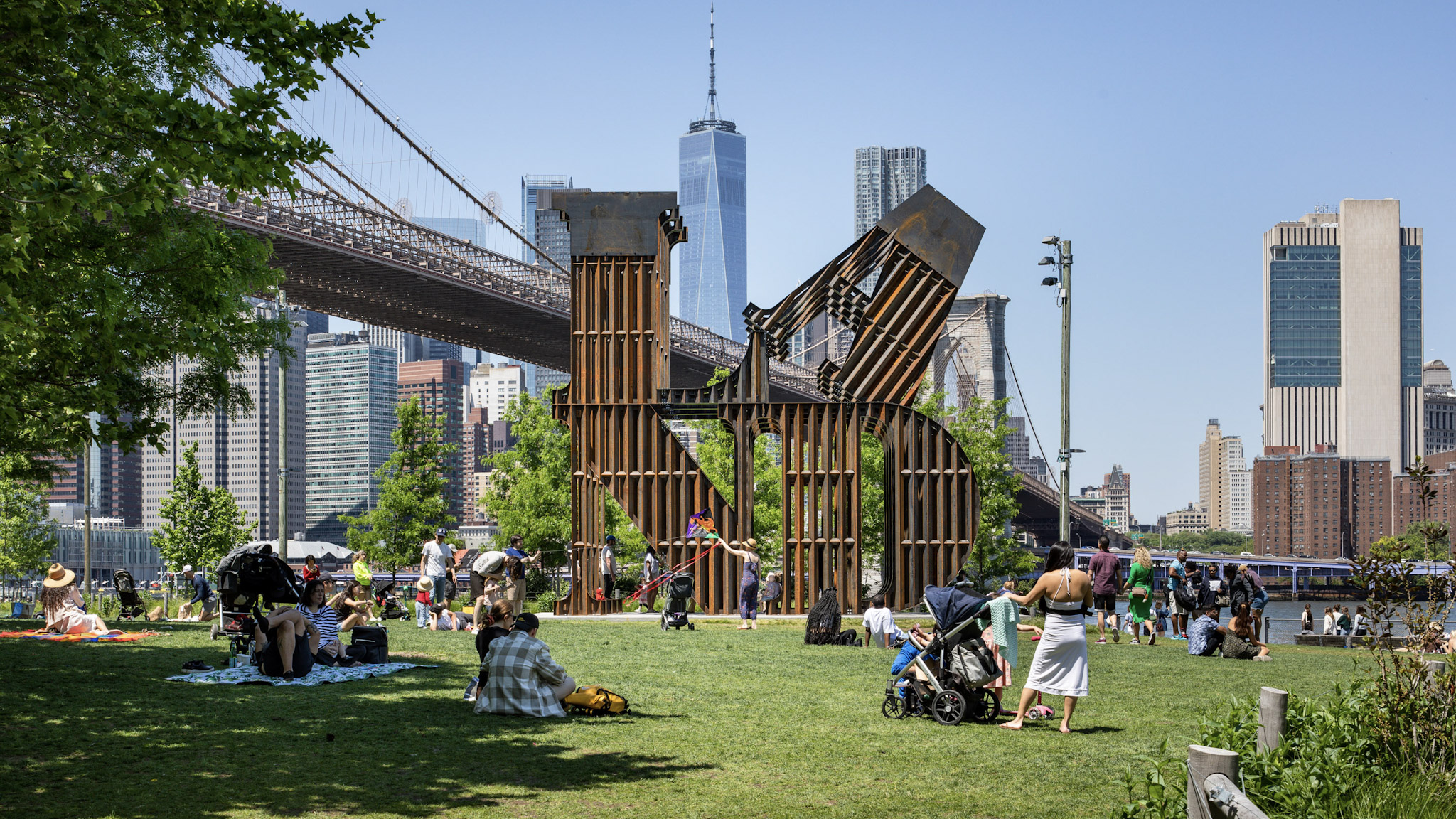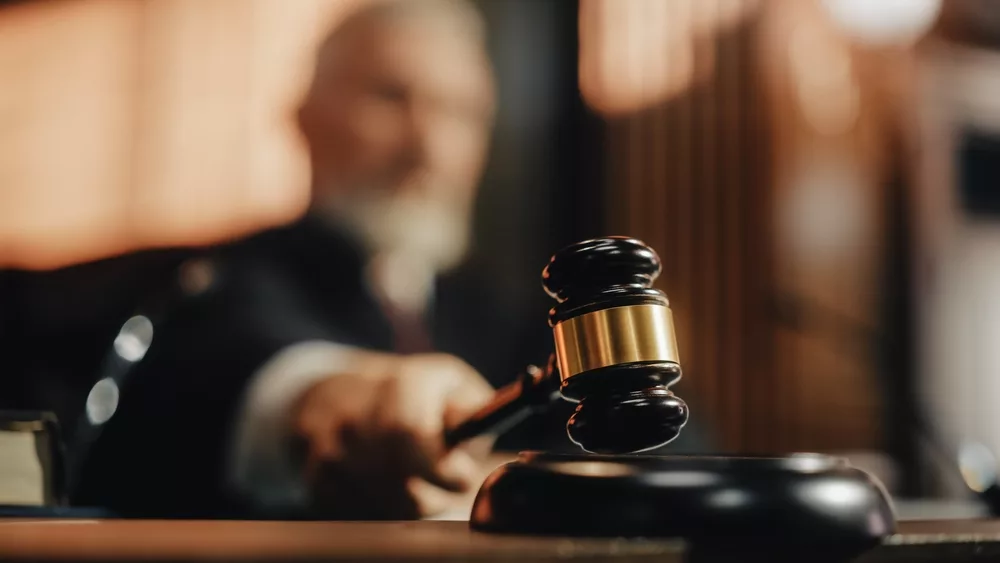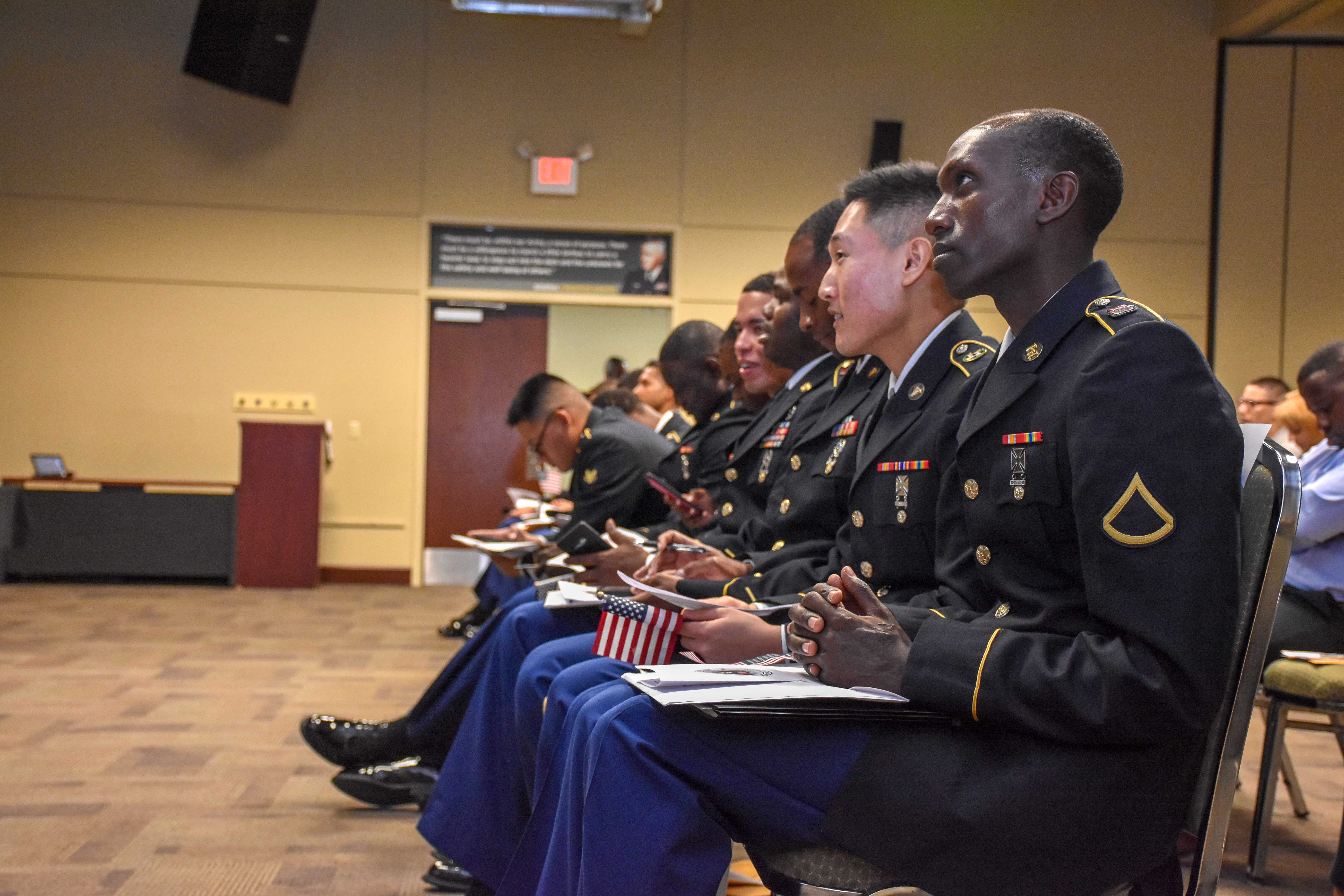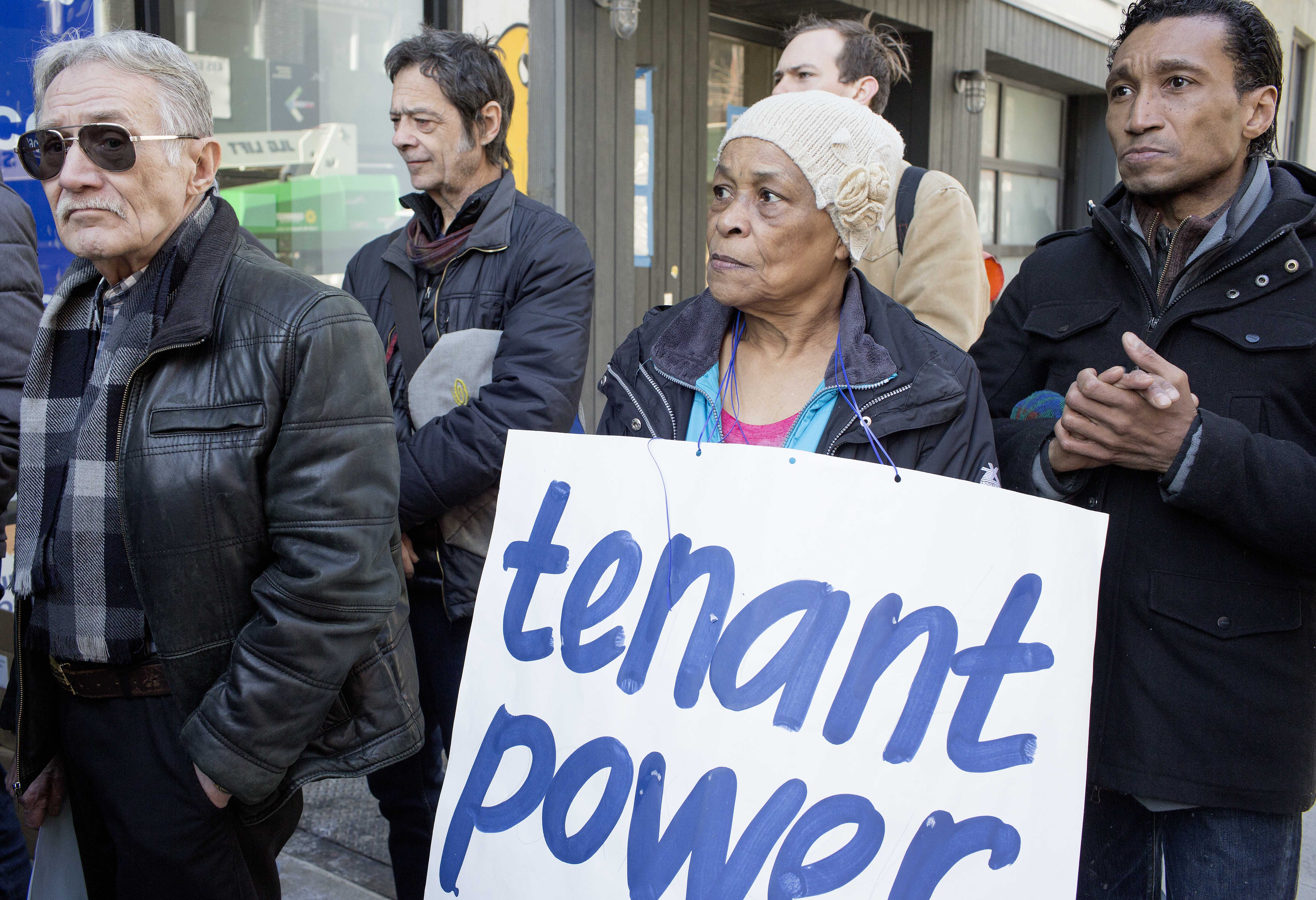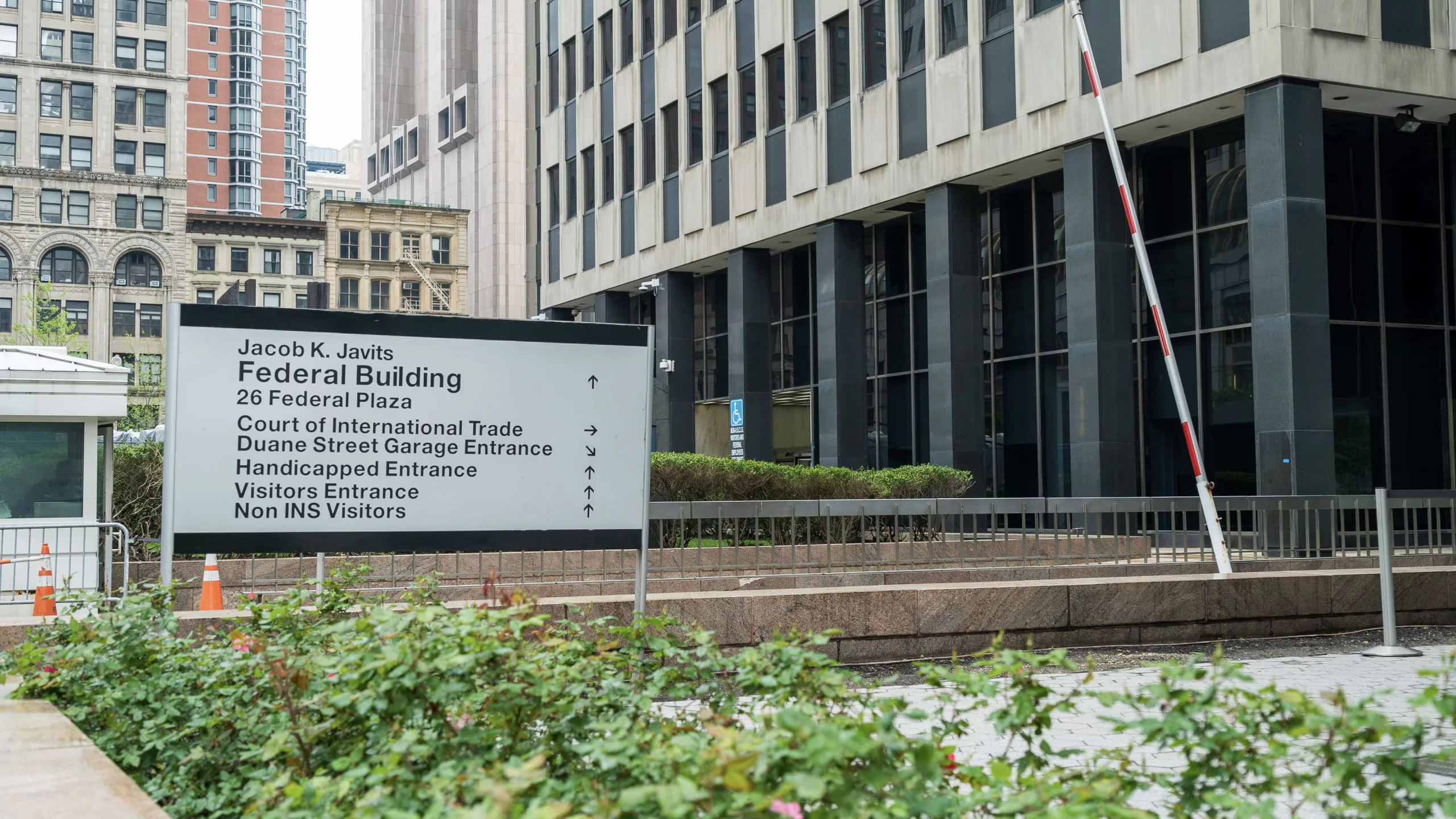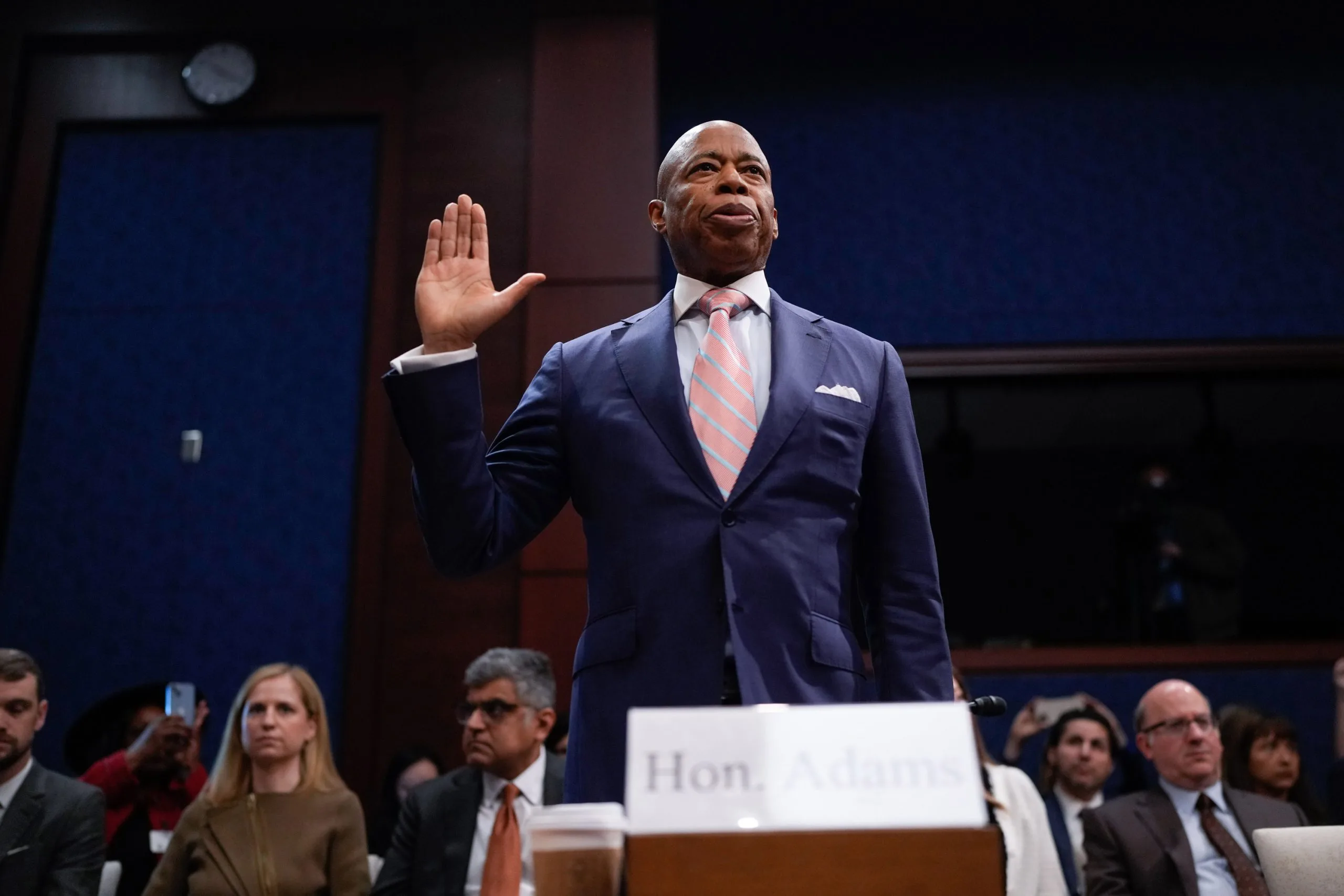The sculpture stands 30 feet tall and weighs 34,000 pounds of steel. The metal comes from the same fabricator who uses it to construct the U.S.-Mexico border wall. Had it followed another path, it would now be standing up to 30 feet tall, baking in the sun, separating tens of thousands of people from entering the United States.
Instead, it sits in Brooklyn Bridge park, a monument to the legacy of borders and colonial violence.
The metal was cut to spell out LAND with a tilted “A,” a format that resembles Robert Indiana’s popular sculpture of LOVE with a tilted “O.”
Nicholas Galanin is the artist behind the gigantic sculpture, which he titled “In every language there is Land / En cada lengua hay una Tierra.” He told Documented the sculpture aims to prompt individuals to contemplate the enduring impacts of colonization, including its influence on migration, while encouraging people to reflect on their connections with land. Galanin is from the Tlingit and Unangax̂ community of Alaska’s Sitka Tribe. His works, rooted in his indigenous identity, advocate for social and environmental justice.
He collaborated with the Public Art Fund to unveil the sculpture on May 15 at the Empire Fulton Ferry Lawn in Brooklyn Bridge Park. In an interview with Documented, Galanin highlighted how the material was sourced from the U.S.-Mexico border wall construction; the overlap in the relationship between the U.S. and Central Americans, and the U.S. and Native Americans; and the inspiration behind the LAND sculpture.
Can you tell us more about the inspiration behind the creation of the Land sculpture?
I feel like this work is relevant not only now, but also historically and potentially, as we move forward in the future about the colonial violence on land, and how these fabricated borders are shaped to either restrict access or are to try to protect an idea of something, I suppose. This not only impacts humans, but also every other being we share the land with. I do a lot of grant based work as an Indigenous artist living in my ancestral homelands and being deeply aware of the connection to place and how that shapes us.
With the work for this project, I was looking at a broader conversation. And in that conversation, including some pop references.
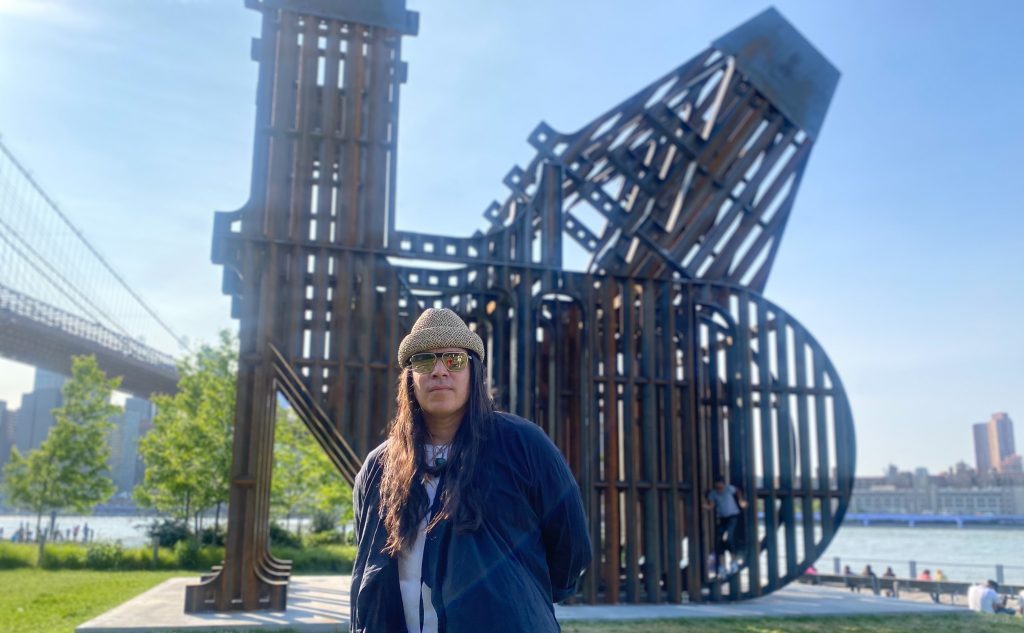
Then of course, the use of language. The title is both in English and Spanish: “In every language there is Land / En cada lengua hay una Tierra,” a reference to the two colonial languages that have also become forms of enforced border in their own ways. What I mean by this is the active removal of indigenous tongue from place as part of genocide towards indigenous peoples on their homelands. So this work is reflecting this in this title on the two sides of this fabricated border.
The reference of the language in this work is land. Literally, the title of the work is to play off a pop imagery: Robert Indiana did a sculpture of LOVE. This work references love for land and what the care of that is, what it actually means to care for it.
We come from a culture where we’ve had 15,000 plus years of understanding and connection and care to place. There is also an understanding that if a concept like love is not extended fully, then it’s anti-ethical in the sense of what are the borders to that idea of meaning of love? It’s anti-ethical to only keep a version of that directed at certain communities and not fully embracing the meaning of that.
How did you track down the material used to make the sculpture?
The material was sourced from the U.S.-Mexico border construction. The actual steel that’s in this piece was set to become the wall, and we sourced it before it made it there. We just contracted a fabricator that solely does that material for that construction.
I was taking a look at your previous work, and I don’t think I could tell if you’ve ever made art using steel, as you did for this land sculpture. Was this a departure from what you’ve done before and what were key lessons or insights from the creation process for you?
This is specific to this piece. It is in a sense a departure. I tend to work with concepts first, and then through that, I find what I feel like is the necessary form, material, or process.
This is a very broad conversation today, not only in the location in a place like New York, which is also a monopoly land, historically. That history is still important, and exists, and it’s important to this conversation as well. As we’ve talked about walls and barriers and borders — even Wall Street had, at one point, a literal wall around it, erected by Dutch settlers on the intent of keeping out indigenous folks and anyone else from that area.
This work was created from that material and it was created purposefully to the scale of the U.S.-Mexico wall, which is 30 feet in height. But there’s other barriers that are not always visible, that are felt or seen. This includes language, access to care, economic stability, health care, education — and Wall Street now even though the walls are removed, there’s still this capitalist barrier that’s still in place in society.
When you were creating the sculpture, how did the creation process challenge you?
There were a lot of challenges from getting support for the work, to just general time-based deadline-based sort of things. But also, I went through a few iterations of material, and scale. I think that’s just my process too, as I really try to exhaust the potential of what something could be until it gets to its final form.
When did you start making the sculpture and how long did it take to complete?
I don’t have an exact timeline, but I’d say over a year or so of planning — from the conversations of being invited to work with Public Art Fund in New York City and a project like this was fabricated in upstate New York because of obviously transportation, and just the process of working with that material. So I worked with some fabricators that are really great at helping to realize projects.
How did the way you use the material, the way you shaped the sculpture and also the size of the sculpture affect the theme of the sculpture and what it symbolizes?
A lot of it was really important in trying to bring, share, and show the violence of a barrier and the design is almost like a brutalist type of form and with that engineering and design of the U.S.-Mexico wall. So the scale was informed by that. I wanted it to be the scale of what that wall is.
How does it feel to have your first public artwork in New York City?
I’m honored to be able to have my ideas and voice in a space like this. I’m excited to engage and see what the engagements are with his work.
The sculpture will be on view to the public from May 16 to November 12, 2023. What do you hope for visitors to the sculpture in Brooklyn Bridge Park to get from appreciating the work?
I hope that people can have their voices and stories shared, told, or heard and I hope that this is something that can amplify or provide some room or space for that.
As a Native American, do you see any overlap in the relationship between the U.S. trying to keep Central Americans out of the U.S., and the way Americans treat native Americans?
Completely. These borders have kind of crossed indigenous communities, literally cut through them. My Tlingit community is separated by the U.S.-Canada border. The conversations here are deeply connected. I feel like the treatment, the removal, the history of removal is still continued. The difference between which type of community or form of immigration is deemed acceptable versus which one is fought against in government and political space is also aligned with the violence of genocide of indigenous communities and histories. There’s still connections across borders with indigenous communities everywhere. This is intentionally disruptive to all those things.
This interview has been edited for clarity and length.
